It’s REAL NEWS.
Have you already heard? There is a jaw-dropping treasure trove of a quadrillion-tons of diamonds for the taking. Not in outer-space or fantasy-land. Right here on planet earth. I was recollecting this today, and started pondering –
How much is a quadrillion?
- It’s 1,000,000,000,000,000
- That’s a one, followed by 15 zeroes
- Scientifically expressed as 1015
- Or… 10 to the power of 15
Never mind all that. Just look.
Here’s how 1 quadrillion pennies would appear, stacked behind the Sears Tower, Empire State Building, Washington Monument, Lincoln Memorial and a football field. For added scale, that’s a cube of 1 trillion pennies between the ESB and Washington Monument.
Remember, that’s a quadrillion pennies. Now you must replace each penny with with a TON of diamonds!
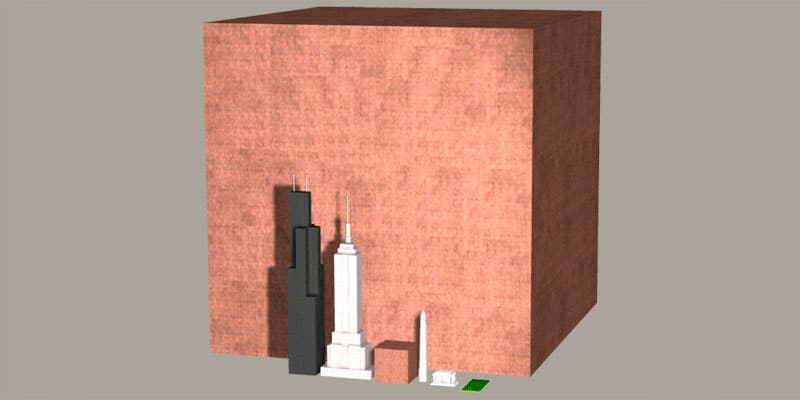
How much are they worth?
This lovely mother-lode has a value of about $85,000,000,000,000,000,000,000,000 dollars.
No need to bother with all those pesky zeroes, though. If you wish to buy them from me you can simply write “Eighty-five Septillion and 00/100 dollars” on the check. I’m totally fine with that.
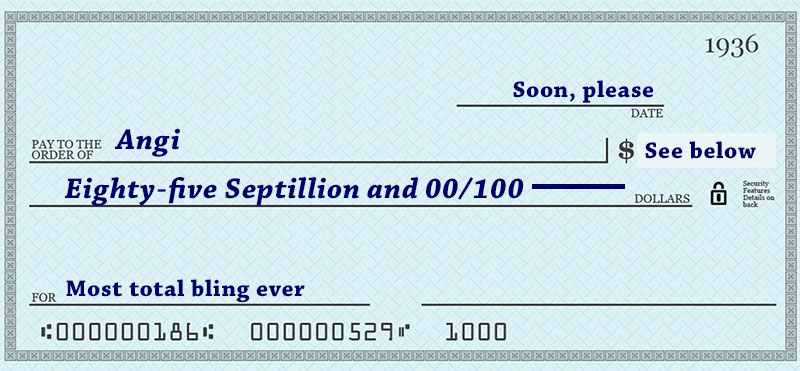
Where are they?
This vast sea of shining Cs is in the most likely of places, right down where the world’s diamonds originally formed.
Cratons are the oldest, most permanent sections of rock on our planet. You’ll find them at the center of most tectonic plates. Think of them as tremendous, upside-down mountains, stretching as deep as 200 miles down through the earth’s crust into its mantle. Extreme pressure and heat as tectonic plates moved, billions of years ago, caused diamonds to form down there.
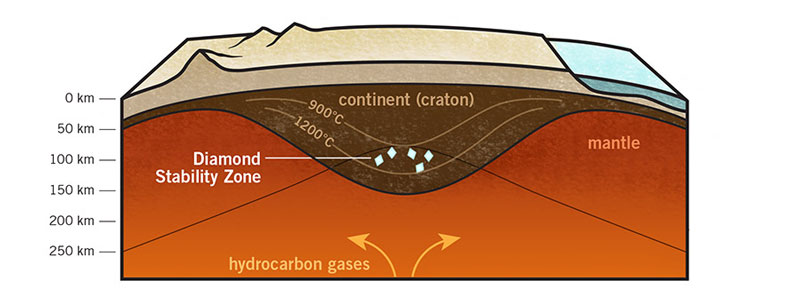
Mankind’s supply of diamonds are those which have been brought to the surface by volcanic activity, via kimberlite pipes in many parts of the world, and one clever little lamproite pipe in Australia.
So the diamonds we wear every day are adventurers who decided to travel and pay us a visit. The tons of rough diamonds nestled beneath the earth’s crust are those who have remained at home.
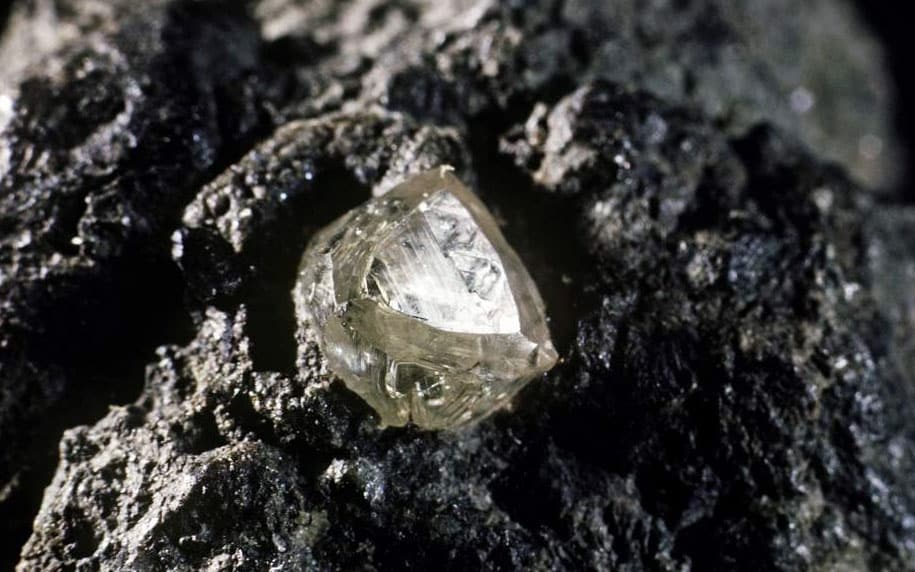
Who found them?
Scientists at MIT reported the discovery in 2018. They stumbled upon this scintillating fact due to an anomaly in seismic data.
Sound waves move at various speeds through the Earth, depending on temperature, density, and composition of rocks through which they travel. These speeds are well-known. The sound waves normally travel quickly through cratons, which are colder and less dense than the surrounding mantle, but were traveling faster than expected when reaching the cratonic roots.
The MIT team used established research to create virtual models, made from various combinations of minerals, then calculated how fast sound waves would travel through each virtual rock. They found only one type of rock which produced the same velocities as measured. You guessed it…Diamond. In fact, 1-2 percent diamonds at the bases of cratons actually keeps them stable, according to Ulrich Faul of MIT.
They are like pieces of wood, floating on water. Cratons are a tiny bit less dense than their surroundings, so they don’t get subducted back into the Earth, but stay floating on the surface… So we found that you just need 1 to 2 percent diamond for cratons to be stable and not sink.
How do we collect them?
Okay, this is the difficult part, but stay with me here. They’re 90-150 miles beneath the surface. That’s not a lot, really, in the scheme of things. I mean…look.
They are RIGHT THERE. Not so far to dig, right?
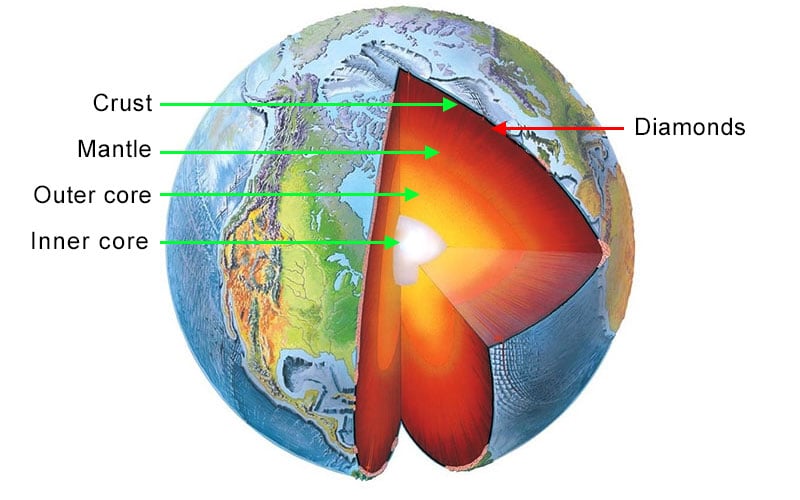
I did some research and the farthest humans have artificially penetrated the earth is just over 12,000 meters (7.6 miles) at a diameter of 23 centimeters (9 inches).
So this is certainly a challenge. But we have to start somewhere, don’t we?
Come on diamond lovers, who’s with me?





